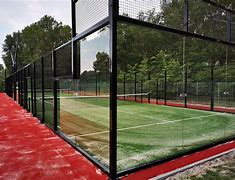

The World of Racquetball and Tennis A Glimpse into Two Famous Sports
Racquetball and tennis are two of the most beloved racquet sports in the world, each with its unique history, rules, and appeal. Despite their differences, both sports share a common foundation in racquet skills, agility, and strategy, drawing millions of players and fans globally. This article explores the essence of each sport, highlighting their origins, fundamental rules, and the reasons behind their popularity.
Origins and Evolution
Tennis has ancient roots, with origins tracing back to France in the late 12th century. Initially played by hitting a ball against a wall using the palm of the hand, it evolved into a more structured game with the introduction of racquets in the 16th century. The modern version of tennis, known as lawn tennis, took form in the late 19th century and quickly spread throughout Europe and the Americas. Today, it is governed by the International Tennis Federation (ITF) and has numerous prestigious tournaments, including Wimbledon, the US Open, and the French Open.
Racquetball, on the other hand, is a relatively newer sport, having been developed in the 1950s in the United States by Joseph Sobek. Emphasizing fast-paced action and agility, racquetball gained popularity in the 1970s and 1980s. The sport is played in an indoor court, typically with a solid rubber ball and a shorter racquet than a tennis racket. The World Racquetball Federation (WRF) oversees international competitions, and the sport has a passionate following, particularly in North America.
Rules and Gameplay
The fundamental rules of each sport contribute significantly to their distinct playing styles. In tennis, matches can be played in various formats, including singles and doubles. Players serve from behind a designated line, aiming to hit the ball over a net into their opponent's court. Scoring is unique, comprising a series of points, games, and sets, with players needing to win six games to claim a set. The strategy in tennis involves a combination of powerful serves, tactical volleys, and placement of shots to outmaneuver opponents.

Racquetball’s gameplay is markedly different. Players serve by hitting the ball against the front wall, where it must bounce back within the court boundaries. The game allows for continuous rallies, with players trying to hit the ball before it bounces twice. Scoring in racquetball is either traditional or rally scoring, with traditionally only the serving player being able to score points. The fast-paced nature of the game, combined with the close quarters of the court, demands quick reflexes and strategic thinking.
Popularity and Cultural Impact
Both tennis and racquetball enjoy immense popularity worldwide, with communities forming around local clubs and casual play. Tennis has an extensive cultural impact, producing legendary players like Serena Williams, Roger Federer, and Rafael Nadal, who have not only dominated the sport but have also become global icons. The elegance and tradition of tennis, coupled with its high-profile tournaments, continue to draw viewers and inspire young athletes.
Racquetball, while perhaps less mainstream, has a passionate community and has produced notable champions who have helped raise its profile in the sports world. The sport is lauded for its inclusivity and accessibility, often played in community centers and clubs where people of all ages can participate.
Conclusion
In conclusion, both racquetball and tennis offer unique experiences and opportunities for competition and enjoyment. While tennis boasts a rich history and a global following, racquetball captivates with its fast-paced nature and energetic gameplay. Regardless of which sport one prefers, the passion for racquet sports continues to flourish, bringing people together and enriching lives through play. Whether on a sunlit tennis court or an indoor racquetball court, the joy of hitting a ball with a racquet remains timeless.
Durable Industrial Flooring Solutions for Factories Expert Installation
Premium Rubber Floor Mats Durable & Slip-Resistant Protection
Rubber Brick Non-Slip & Eco-Friendly Flooring Solutions
Premium Rubber Floor Mats Durable & Non-Slip Protection
Durable Rubber Floor Mats Slip-Resistant & Heavy-Duty
Industrial Flooring for Racquetball & Squash Facilities Durable, Safe Solutions